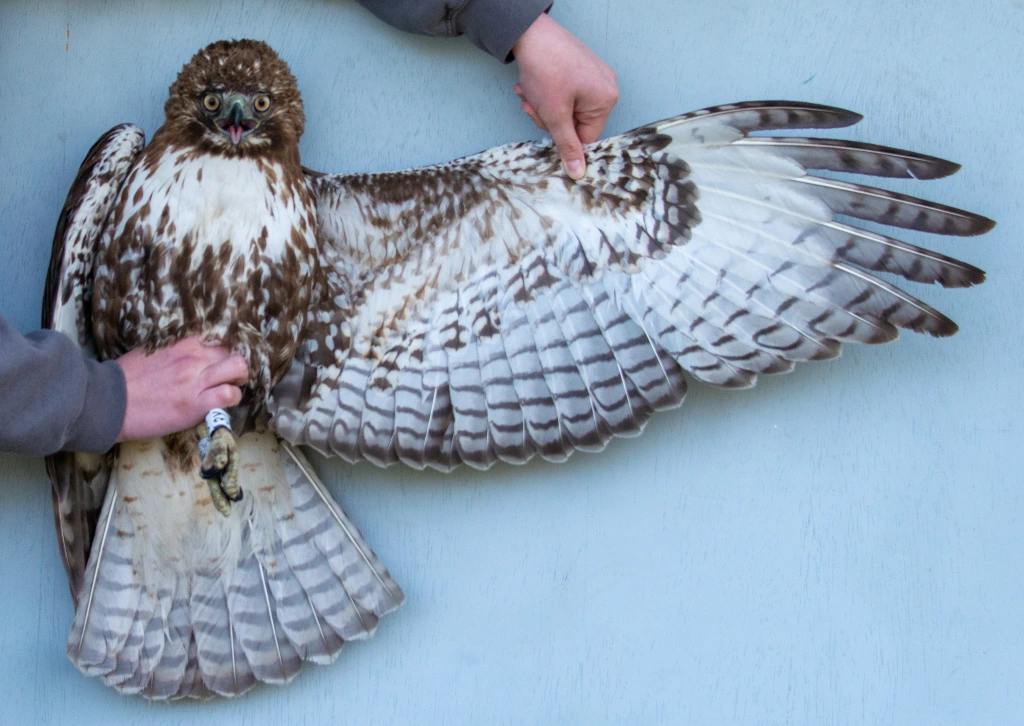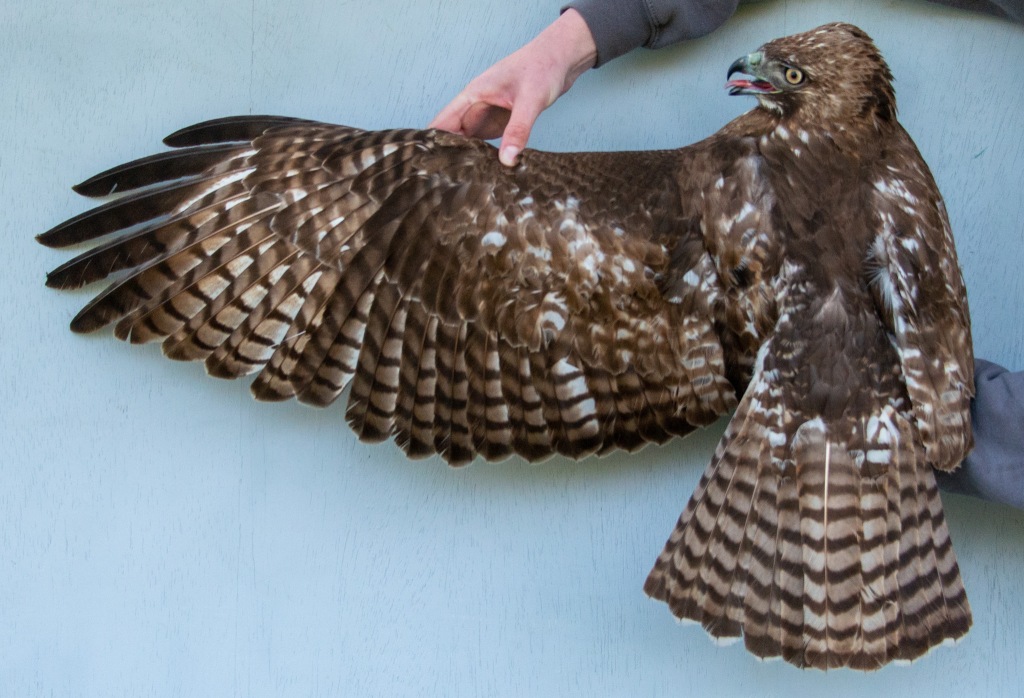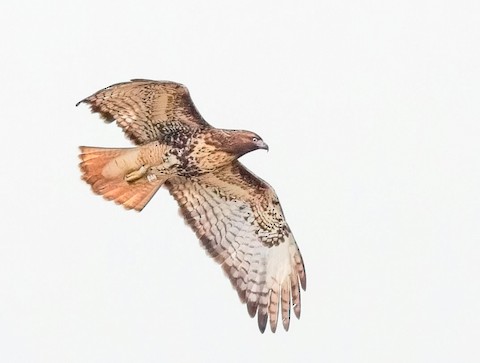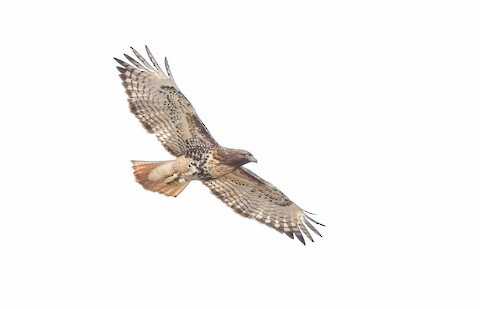One big component of the Red-tailed Hawk Project focuses on understanding movement ecology, including migratory, breeding and wintering ground movements. However, it is not feasible to put a transmitter on every bird we capture so in conjunction to our transmitter effort have put color bands on birds across their North American range. To effectively do this, individual researchers have a unique color combo to represent certain regions and the specific populations that move through those areas.
Nick, who bands migrants passing through the Straits of Mackinac in Michigan, uses white color bands that contain a black two digit alpha-numeric combo. Nick has been putting out color bands for two years now on breeding and non-breeding adults, and juveniles. One of our hopes with color banding juveniles is to see areas these non-breeders use throughout the year. We are also hoping to document the plumage progression in various subspecies as they molt from juvenile to adult plumage, something that remains a mystery because of the vast phenotypic variation among juveniles, especially among the subspecies abieticola.


Color banded 3Y in juvenile plumage (May 2023)

Color banded 3Y in adult plumage spotted in Jackson County, Mississippi
Now the exciting news. A juvenile abieticola that was banded in May of 2023 in the Straits region was recently resighted in Jackson County, Mississippi, near the Gulf of Mexico. This is also the furthest south we have had a Michigan migrant winter. With this we were able to document the change in plumage for what we would consider a more heavily marked juvenile of this subspecies.
Hopefully this has inspired you to look a little closer at the next Red-tail you see when you are out birding and to check and see if they too have a color band. If you do you can report the auxiliary marker (color band) here where you will be awarded a certificate for your effort and if you are lucky enough to get photos, please post those to Macaulay Library and ebird as these data are incredibly valuable.
The full set of photos for the resighted bird can be found here. I’d also like to thank Mike Borle for passing along this information about this resight from the Red-tailed Hawks of the United States Facebook page and of course Sharon Milligan for snapping some great shots of this bird!

